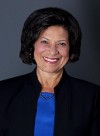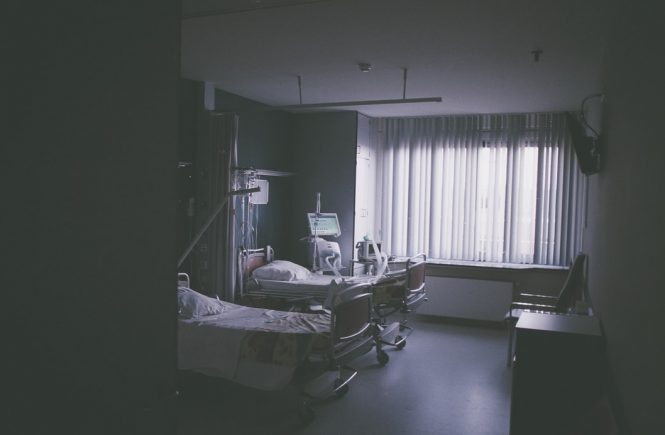By Marilyn M. Singleton, MD, JD
Medicare for All (M4A) retained its prominent place on the stage at the latest Democratic debate. In its purest Bernie Sanders form, concurrent with abolishing private health insurance, U.S. residents would be enrolled in “Medicare.” The program would pay for unlimited “medically necessary” health expenses, including pharmaceuticals, mental health and substance abuse treatment, vision, dental, and hearing services, and long-term care with no out-of-pocket costs. Some supporters were scared off by the $32 trillion over 10 years price tag. Not to be outdone, Elizabeth Warren’s “I’m with Bernie” plan comes with a $52 trillion over 10 years price tag including up to $34 trillion in new government spending. Our country’s entire yearly budget is a mere $3.5 trillion. For perspective, if your salary is $40,000 per year it would take 25 million years to earn 1 trillion dollars. As M4A’s dark side emerged, the candidates distanced themselves from Bernie-care.
Elimination of private insurance? Whoa, Nellie! Over 156 million Americans —half the country—are covered by employer-sponsored health insurance plans and another 23 million have private individual policies. And most of these folks like that arrangement. Then there was pushback from some unions who had excellent health insurance policies for which they had bargained and given up other perks.
In the June debate the candidates raised their hands indicating they would abolish private health insurance. Now Mayor Buttigieg wants to “unify the American people around, creating a version of Medicare, making it available to anybody who wants it, but without the divisive step of ordering people onto it whether they want to or not.” Vice president Biden, noting his desire to keep patient choice stated, “we should build on Obamacare … adding a Medicare option in that plan, and not make people choose.” Of course, Obamacare caused a rise in premiums, a decrease in choice of insurance coverage, and like any large government-run program was prone to mismanagement and waste.
Possible financing mechanisms were screaming for a deep dive. One analysis concluded that most Americans would suffer financially if M4A were implemented as proposed. An analysis by a bipartisan think tank estimated a 32 per cent increase in payroll taxes would be needed to fund M4A. Everyone—even the working poor—would have more payroll taxes extracted from their paycheck. The analysis concluded that most households would pay more in new taxes than they would save by eliminating their current spending on private health insurance and out-of-pocket medical expenses.
Senator Warren tries to hide the ugly truth by railing about the evil rich who would be taxed down to their underwear. Take the deceptively worded “2-cent” annual tax for households with more than $50 million in assets. If you have $51 million in assets, most probably tied up in your business, you’d have to cough up (.02)($1,000,000) or $20,000, not 2 cents. The devil’s spawn, aka our 535 billionaires, would be subject to a 6 percent annual tax on their assets. Who will be the next target when the government has driven the assets to a sunny island in the Caribbean? Finally, raising the corporate income tax back up to 35 percent likely would result in businesses paying lower wages to current employees or cutting back on hiring to compensate for the increased tax burden.
During the latest debate, Senator Warren retreated from her “all-in” approach, asserting she would first provide Medicare at no cost to “everybody under the age of 18, everybody who has a family of four income less than $50,000”—about 135 million people. Second, she would lower the Medicare age to 50 and expand Medicare coverage to include vision, dental, and long-term care. In the third year, “when people have had a chance to feel it and taste it and live with it, we’re going to vote and we’re going to want Medicare for all.”
Senator Sanders owns that payroll taxes would be doubled or tripled and proposes a 4 percent surtax on families earning more than $29,000. So if you earn $60,000, you’d have to pay (.04)($31,000) or $1,240, enough for a whole year’s membership in a private Direct Primary Care plan. Senator Sanders, staying true to his principles, is sticking with unadulterated Medicare for All with its financial warts.
Even those who are numb to government over-spending can see the broader problem of inviting Uncle Sam into their lives in exchange for a Medicare card in their wallet. Any remaining privacy is erased. Our medical records would be furnished to the Department of Health and Human Services and the National Coordinator for Health Information Technology. Physicians and patients would be robbed of their autonomy and choice by medical care policies set by the government monopoly. Lack of competition leads to lower quality and fewer services. Coverage becomes an illusion.
Medicare for All’s beauty is only skin deep and its ugly goes to the bone.
Bio: Dr. Singleton is a board-certified anesthesiologist. She is Immediate Past President of the Association of American Physicians and Surgeons (AAPS). She graduated from Stanford and earned her MD at UCSF Medical School. Dr. Singleton completed 2 years of Surgery residency at UCSF, then her Anesthesia residency at Harvard’s Beth Israel Hospital. While still working in the operating room, she attended UC Berkeley Law School, focusing on constitutional law and administrative law. She interned at the National Health Law Project and practiced insurance and health law. She teaches classes in the recognition of elder abuse and constitutional law for non-lawyers.









